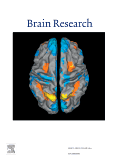
“As cannabis use increases, physicians need to be familiar with the effects of both cannabis and tobacco on the lungs. However, there have been very few long-term studies of cannabis smoking, mostly due to legality issues and the confounding effects of tobacco.
It was previously thought that cannabis and tobacco had similar long-term effects as both cause chronic bronchitis. However, recent large studies have shown that, instead of reducing forced expiratory volume in 1 s and forced vital capacity (FVC), marijuana smoking is associated with increased FVC.
The cause of this is unclear, but acute bronchodilator and anti-inflammatory effects of cannabis may be relevant.”


1098-2744/asset/olalertbanner.jpg?l=SkaBT8QEx2rBLBmQ2URf7fAaMkdr93XX6rZGHTxNciKmUq8irCOtJ8iDpNMUJn%2FA)






